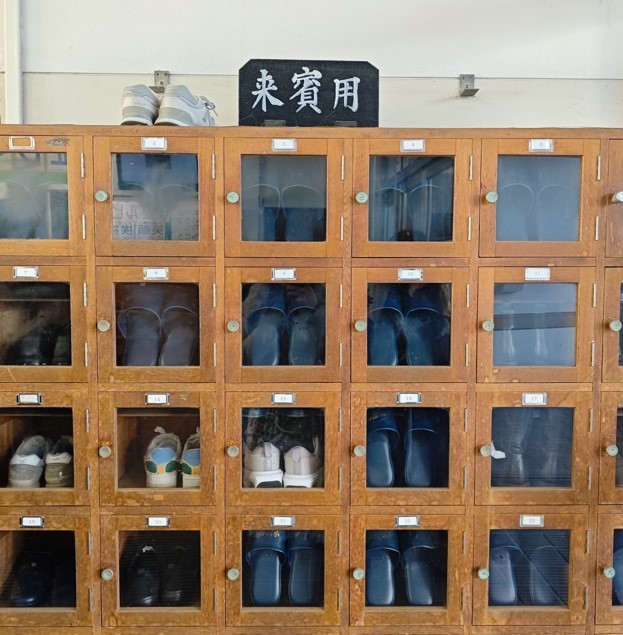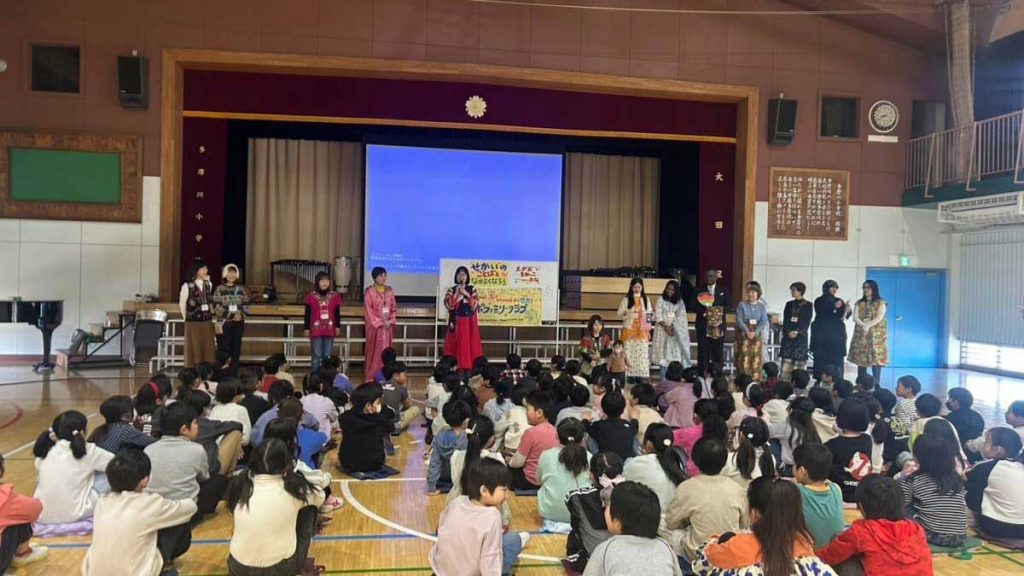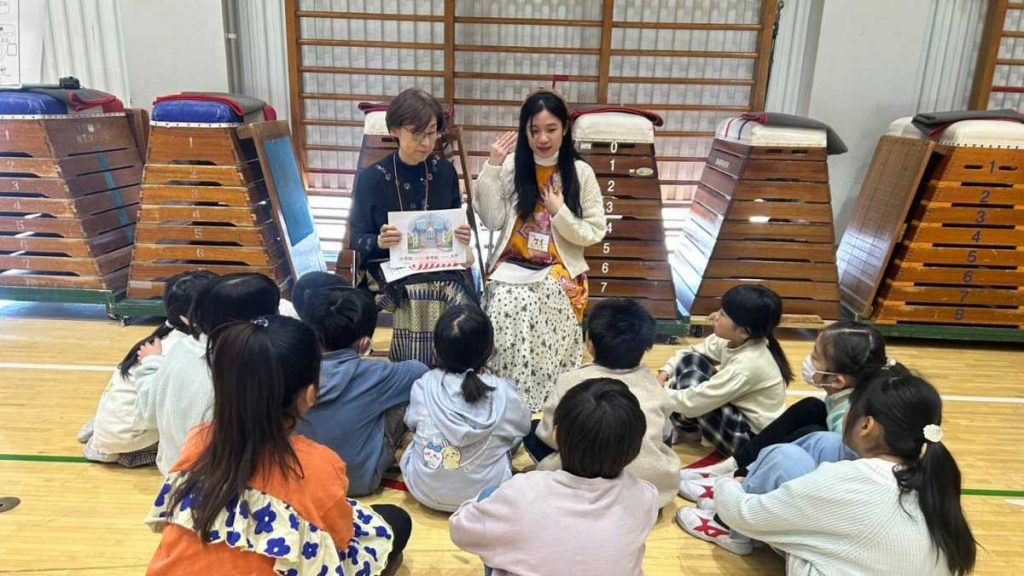For a long time, I have been curious about the Japanese education system, which has a global reputation for discipline and politeness. Therefore, when I learned about an opportunity to visit Tamagawa Elementary School, I excitedly signed up. The theme of this event was “Let’s Become Friends with the Languages of the World.” It aimed to introduce the cultures and languages of other countries to elementary school students through interactive activities. In this blog, I will share my one-day experience at the elementary school.
The Tamagawa Elementary school is about 40 minutes away by train and walk from Ookayama Campus. In the morning, I met up with members of the Hippo Family Group at the station, and we walked together to the school. Upon entering, the first thing that caught my eye was the shoe cabinet (Photo 1). Just as I have seen in Japanese anime, students changed into indoor shoes upon entering the school — this made me feel like I had stepped into an anime scene. After changing our shoes, we were led to a preparation room.

As we walked through the school, the slogans in the corridors, notices, and the history of the school on the bulletin boards, as well as the trophies won by the students and artwork, all brought back memories of my own primary school days (Photo 2 & 3).

Upon arriving at the preparation room, I realized that the Hippo Family Group members even prepared Batik, which is a traditional Malaysian art fabric, and a Malaysian national flag for me (Photo 4). This really meant a lot to me, because I didn’t have many items that represented Malaysia while in Japan.

Afterward, we began the session with the kids (Photo 5). I personally love working with kids, and interacting with them made me feel like I had returned to my childhood. The first activity was to introduce ourselves, where we each greeted the children in our respective country’s language. Then it was time for the children’s favorite part: game time. We played Rock-Paper-Scissors in Korean, followed by a music game in German. Afterwards, the children sat down and listened to Yurina-san share stories about her experiences in Uganda, which gave them a better understanding of the lives of Ugandan people.

The next session focused on learning about the cultures of different countries. As a Malaysian, I introduced the children to Malaysian culture (Photo 6). I was surprised to find that most of the children had tried Milo (chocolate drink popular in Malaysia), even though I rarely find Milo in Japan. After sharing, we played ‘London Bridge is Falling Down’ together. Afterwards, it was the children’s turn to share their feelings and impressions. I thought they would be too shy to speak, but they were very enthusiastic about expressing their thoughts.

Next, it was lunchtime, and I had chosen to eat with the children. I was quite surprised to see that the Japanese elementary school children had their lunch in the classroom, whereas in Malaysia, we could only eat in the canteen. I was particularly impressed that the seven-year-old kids were in charge of distributing food (Photo 7). When I think back to when I was seven years old, I remember sitting at the dining table while my mum brought the food to me. The children didn’t rush to be the first, but lined up in groups to receive their food. Their lunch emphasizes balanced nutrition, including bread, vegetables, a bowl of soup, and a carton of milk. Although the portion seemed small, it was very filling. After eating, the children taught me how to open the milk carton, sort the trash, and return the plate, tray, and cutlery. This made me realize that the reason Japan is so clean is probably because the awareness of separating rubbish by materials is cultivated from the age of seven.

What touched me the most about the whole event was that, when I left, the children actually called out my name. I hadn’t expected these children to remember my name. To sum up the day, I learned a lot and saw the success of Japanese education. This day not only brought me happiness, but also added a touch of sweetness to my busy research life.
Conclusion
This event not only gave me insight into how Japanese children are educated, but also gave me a chance to witness the discipline and politeness that are inherent in Japanese culture. If you are interested in joining this kind of event, the Strategic approach to Japanese and culture course offered at Science Tokyo traditionally includes a visit to an elementary school. However, I joined the course during the Covid-19 pandemic, and the visit was held online at that time. Luckily, I was able to join this kind of event in person before my graduation.
